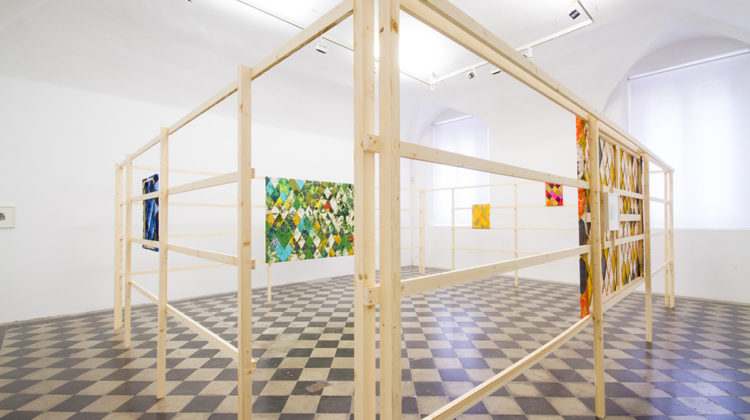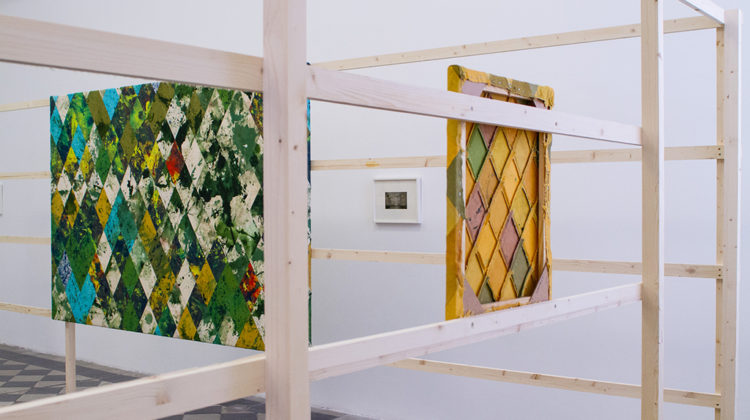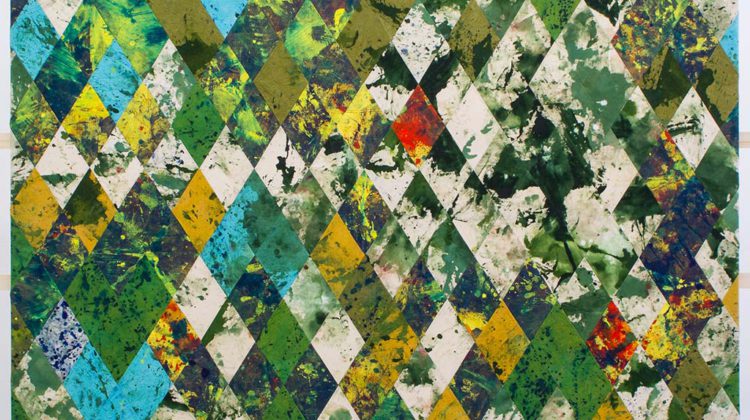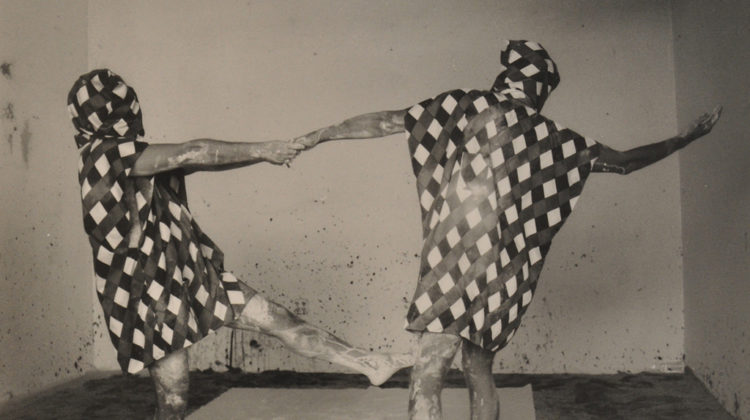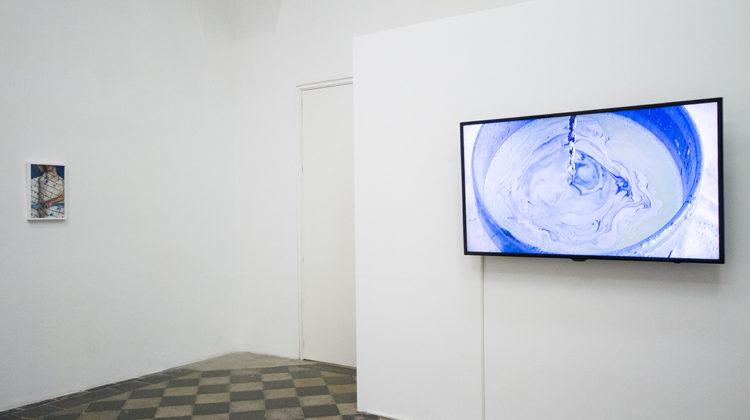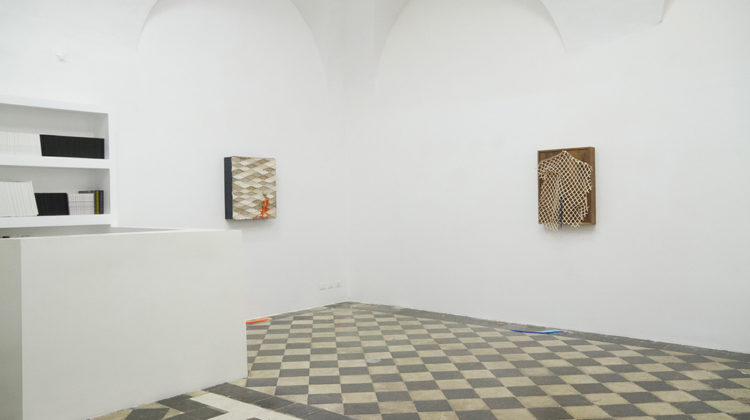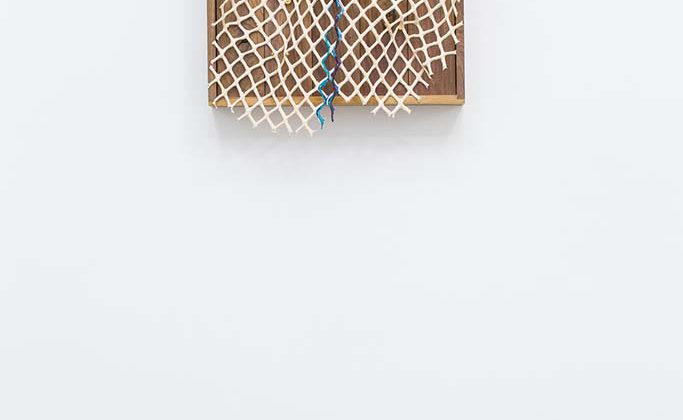Oltre l’oblio
Jonathan VanDyke
Galleria 1/9unosunove is pleased to announce the first solo exhibition in Italy by American artist Jonathan VanDyke.
Il personaggio…deve guardare altrove per capire, nel vuoto.
(The character…must look elsewhere to understand, into emptiness.)*
Michelangelo Antonioni
A recurring theme invoked in the words and films of Michelangelo Antonioni is the search or gaze into an empty space, which gradually and with effort becomes full of understanding and significance. In his first solo-exhibition in Italy, Jonathan VanDyke borrows the title of Antonioni’s 1948 documentary short, Oltre l’oblio, in reference to this transformative process of looking or traveling “over the oblivion,” a notion that persists throughout VanDyke’s new paintings, sculptures, photographs, and video.
A series of black and white photographs depicts two performers, dancers Bradley Teal Ellis and David Rafael Botana, cloaked and masked. Blinded and immersed in dark oblivion by their head coverings, the two, who are also a couple, are seen reaching out in search for the other and eventually making contact. Permeating their actions and gestures is a mood of desire, longing, loss, as well as the revelation of discovery. Mirroring these acts of “going into the dark” is VanDyke’s use of a now anachronistic photographic process, in which the photographic image emerges upon an empty page only after entering the dark room. Even VanDyke’s paintings receive similar treatment: initially serving as grounds for performances by Ellis and Botana, who are instructed by VanDyke “not to look at the canvas” while paint drips from their clothing, the canvases amass stains, drips, and smears that index the actions and interactions of bodies and materials made while sight is averted elsewhere.
In Oltre l’oblio, VanDyke presents a spatial and temporal experience in which his works, and one’s engagement with them, gradually but continuously change. Within the first gallery, VanDyke has constructed an apparatus that shifts from sculptural, to architectural, to painterly armature, an open wooden enclosure that simultaneously obstructs and reveals its interior and exterior to the viewer, as if through apertures. Circling outside the enclosure, one can see the front and back of six paintings installed within, and six photographs hanging without. Migrating throughout the photographs and paintings are geometric patterns that in the photographs appear in the performers’ harlequinesque habits, and in the paintings, transform and accumulate as if bricks, prison bars, or walls.
Alluding to textiles, architecture, or Modern art, geometric patterns and grids circulate throughout the second gallery in photographs, sculptures, and video. VanDyke’s sculptures, which possess a bodily relationality in size and scale, emit drips of viscous paint that harden and accumulate upon the floor in chromatic pools. The same paint reappears on fabric, canvas, and bodies in VanDyke’s video, a sensual and mesmerizing culmination of painterly, sculptural, performative, and cinematic encounters set against the sound of the whirring fan that marks the opening of Antonioni’s L’Eclisse. Central to VanDyke’s photographic and video works is an interest in degrees of control, choreography, or chance within direction and performance, and the relationship between documentary (i.e. “real life”) and the cinematic (“performed life”). How might the threshold or void between the real and the performed be articulated or materialized?
VanDyke describes the title Over the Oblivion as “resonating through the works…I imagine one goes “over the oblivion” through blindness (wearing masks in the photo shoot), by scaling a wall (the “walls” created by the paintings), through the rigors and mysteries of the body (sexuality, sex, disease, spiritual awakening), through art (Abstract Expressionist painting and the idea of the transformative or sublime), through the disruption of patterns (especially those patterns that surround us so much that we don’t even see them). And there’s the paint dripping endlessly out of the sculptures and into the void.” Materially, conceptually, and metaphorically, VanDyke reflects upon oblivion, an emptiness or void, which through thought, vision, and action might ultimately become full. Indeed, il campo vuoto non è vuoto ma pieno.
Lisa Hayes Williams
For any further information please contact:
gallery@unosunove.com
